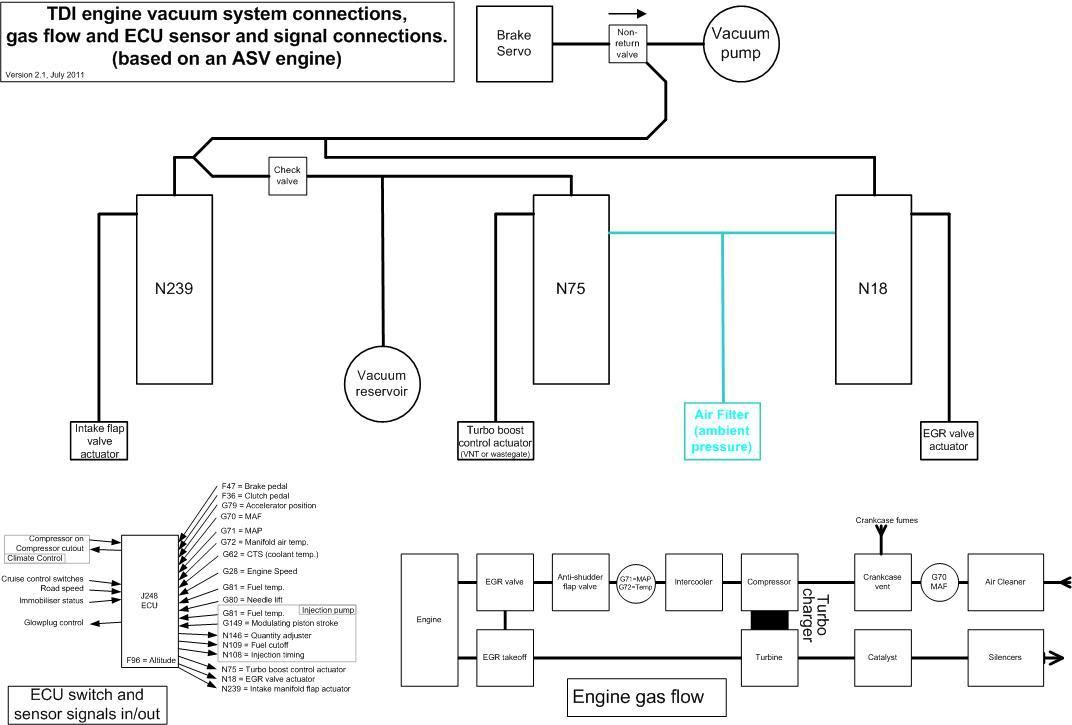You are discovering one of the peculiarities of the engine control system: the ECU sends out electrical signals to the solenoid valves which turn them into pneumatic (air pressure) signals which drive the actuators.
My guess as to why there is this peculiar interface is that it keeps the electrical components well isolated from the hot bits of the engine, the turbo and the EGR.
So, the ECU controls boost pressure and EGR dose via the N75 and N18 valves.
The anti-shudder valve (just a butterfly, like you would find in a carburettor: it really confuses some folks) is spring-loaded in the fully open position and is flicked shut when the engine is turned off, to prevent run-on - after all, as long as the engine is turning over, the injection pump is delivering fuel to the injectors, and the fuel cut-off doesn't act immediately, there is still fuel in the pipes.
Looking more carefully at your underbonnet picture and comparing it to one of my old ASV Toledo, I can see that you still have both the N18 and N75 valves in place.
Earlier you said
The pipe itself that's not connected up is connected to the solonoid that works the EGR, out the back. That pipe itself comes out the back in to a t-piece, the one section has this pipe on (which I assume should go back in to the N75?) and the other part to this t-piece goes directly in to the air box. From the diagrams I have looked at the pipe that should go directly in to the air box should be the N75 and not the N18 (EGR solonoid)?
EDIT - checking my old engine bay photos I was wrong first time around
I think you're almost right: but of the two solenoid valves on your firewall, the right-hand one in the photo is the N75 and controls the turbo vanes: the left-hand one (buried under pneumatic pipework) is the N18 which is now superfluous. So the loose connection would normally have gone onto the right-hand side of the N75 valve. From your other thread I can see that this valve only has two connections... that is not like it was in my old ASV-engined Toledo. Hmmmm......
I do think that the loose pipe is part of the blue-lined atmospheric pressure pipework in my diagram. So the fact that it is disconnected is not a major
problem, as he N18 now has nothing to do and your N75 appears not to have an atmospheric pressure connection......





